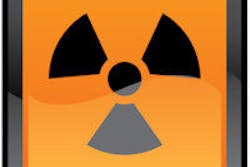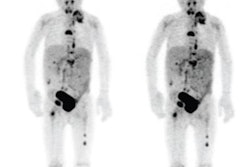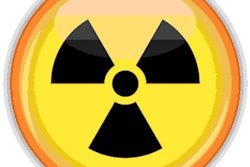
Yes, good software can go a long way. But it takes people to really make a radiation dose-monitoring initiative successful, according to a July 27 webinar co-sponsored by the Society for Imaging Informatics in Medicine (SIIM) and the European Society of Medical Imaging Informatics (EuSoMII).
While a number of regulatory and legislative efforts lately have aimed to increase awareness of the possible risks and the necessary safeguards surrounding radiation exposure from medical imaging, individual facilities still have a lot of work to do to properly design and implement a radiation exposure monitoring effort, according to Dr. Tessa Cook, PhD. Cook is an assistant professor of radiology at the University of Pennsylvania and developer of the Radiance open-source radiation exposure monitoring software.
For example, reductions in dose exposure to patients cannot be achieved without organized efforts to compare dose data and modify scanning protocols as needed.
"Even though it can be considered an informatics initiative -- and it certainly is -- it's much more than just purchasing and installing a piece of software," she said. "The personal aspects really cannot be overlooked."
A hot topic
Driven by growing interest in limiting radiation exposure for patients, a number of regulatory and legislative efforts have targeted radiation exposure in medical imaging over the past few years. For example, a 2010 initiative by the U.S. Food and Drug Administration (FDA) sought to reduce unnecessary radiation exposure from medical imaging. Even state legislatures have gotten involved in developing requirements for radiation exposure monitoring, Cook said.
Tracking radiation safety metrics was one of the components of the FDA's 2010 effort. In 2011, the Joint Commission highlighted the radiation risks of diagnostic imaging and offered recommendations such as performing the appropriate test, adhering to Image Wisely guidelines, buying new equipment, and controlling access to image protocols to avoid unexpected changes, she said. It also endorsed the creation of a national registry for dose reporting.
On the state level, California adopted legislation that required reporting of dose indices in the radiologist's report, effective July 1, 2012. The required indices included CT dose index volume (CTDIvol) and the dose-length product (DLP), or the size-specific dose estimate (SSDE) as recommended by the American Association of Physicists in Medicine (AAPM). In 2015, the Joint Commission released national reporting requirements for dose indices, Cook said.
"While these were originally modeled on the California legislation requirements, ultimately the Joint Commission did not require radiologists to include dose indices in their reports," she said. "However, dose indices are required to be recorded in the medical record, and these include CTDIvol, DLP, or SSDE. It's also interesting to note that the Joint Commission acknowledges that these are dose indices that do not represent the actual radiation dose to the patient being scanned, and this is an important concept to keep in mind throughout the radiation exposure monitoring process."
Smart Dose CT
Meanwhile, the National Electrical Manufacturers Association (NEMA) has played a major role in the exposure monitoring effort, Cook said. NEMA's Medical Imaging and Technology Alliance (MITA) has released a number of important standards, such as XR-29-2013, also known as MITA Smart Dose CT. It defines attributes for standards related to dose optimization and management and comprises four components: the DICOM Radiation Dose Structured Report (RDSR), reference protocols, MITA's CT Dose Check standard, and Automatic Exposure Control (AEC).
The DICOM RDSR captures dose indices and allows them to be stored as discrete data elements within the DICOM header; these can then be easily extracted, she said.
"It's important to note that for the purposes of compliance with XR-29, these radiation dose structured reports must be generated by the CT equipment and not by third-party software," Cook said. "There's a concern that third-party software might not populate all of the necessary components of the RDSR."
The Smart Dose CT standard also requires that reference pediatric and adult protocols be preloaded onto the CT equipment and that they follow a specific template, as defined in NEMA's XR 28-2013 standard. Next, the CT Dose Check function, as stipulated in NEMA XR 25-2010, must be displayed on the scanner console before the patient is scanned.
"So if there's a possibility of exceeding a preset threshold for a component of an examination or an entire examination, the scan parameters can be modified to avoid that scenario, if possible," she said.
CT Dose Check has two components: notifications and alerts. Notifications will appear on the console if an upcoming irradiation event exceeds the threshold set for an individual's scanning series. Technologists can acknowledge and dismiss the notification, however, and continue with the scan if the parameters are deemed to be appropriate, Cook said.
Alerts, on the other hand, are displayed when an upcoming irradiation exceeds the threshold for a cumulative dose index threshold set at the facility. These alerts are based on the entire examination -- not just one image series -- and require a superuser override to continue with the study.
The last component of XR-29 is Automatic Exposure Control, also known as tube current modulation.
Failing to comply with the Smart Dose CT standard can have a financial impact. As required by the Protecting Access to Medicare Act of 2014, the U.S. Centers for Medicare and Medicaid Services (CMS) instituted a 5% reduction in Medicare reimbursement for outpatient exams that are performed on equipment that isn't compliant with XR-29 as of January 1, 2016. This reimbursement cut will be increased to a 15% reduction after January 1, 2017. Compliance can be achieved with a manufacturer certification that the scanner meets the requirements of XR-29, Cook said.
Assessing software
When considering a software application to assist with the dose-monitoring effort, it's important to assess its capabilities, including whether it conforms to the Integrating the Healthcare Enterprise (IHE) Radiation Exposure Monitoring (REM) profile, according to Cook.
"Is it able to receive dose indices in different formats from different sources, both from the modality as well as an archive?" she said. "What kind of reporting does it provide? Does it send data to a national registry? These are all some of the components of the IHE REM profile that may be important at your facility and should be considered."
If your institution would like to implement dose monitoring for more than just CT, confirm that the software can support other modalities as well.
Also, "will it take data from a radiation dose structured report and a legacy dose sheet, or only one or the other?" she said. "How it can convert from the legacy dose sheet to the structured report, if that's a necessary feature?"
Facilities also need to consider the software's data transfer requirements -- such as whether only the radiation dose structured report and/or the legacy dose sheet need to be sent to the software or if the entire examination will need to be transmitted -- and determine if their infrastructure can support those requirements.
Prospective purchasers should also understand what alerts are provided in the application and whether or not customized reports are available. They should also investigate whether the software communicates with the American College of Radiology (ACR) Dose Index Registry (DIR) and if any protocol management capabilities are included, Cook said.
"There are many possibilities that modern radiation exposure monitoring software may have, and it's important to think about what features might be important at your facility before you invest in a particular application," she said.
Know your CT scanner
It's also vital to be familiar with your CT scanner equipment, particularly if your facility has systems from multiple vendors, Cook said. It can be difficult to develop, maintain, and compare imaging protocols without being able to match up the specific features and parameters on equipment by different vendors. Fortunately, the AAPM has some lexicons available on its website that match up the different terms used by vendors for their features.
Managing CT protocols is also an enormous aspect of a radiation exposure monitoring initiative. At the University of Pennsylvania, developers built an in-house open-source software application to handle that task. However, vendor-specific applications are also being developed.
"It's important to be able to monitor protocols and identify when things change in an unexpected fashion," Cook said. "[It's also important] to lock down protocols on equipment, so that parameters don't unexpectedly get changed and used on patients inappropriately."
Participation in the ACR's Dose Index Registry can be a big component of a radiation exposure monitoring effort, she said. The DIR is an international initiative for collecting dose indices and providing comparative benchmarks for different study types. Members can receive regular quantitative reports and access an online portal to compare their site's dose indices with those from other institutions.
"It's a very powerful quality improvement resource and can even be used as a standalone radiation exposure monitoring application," she said. "I know of many successful instances of facilities using their data from the DIR to modify their protocols and decrease radiation exposure for their patients."
Cook noted that dose indices do not indicate the actual radiation dose for the patient. CTDIvol and DLP are computed variables that represent scanner radiation output based on prescribed scan parameters; aside from adjusting for patient attenuation when tube current modulation is used, these indices are not unique to the patient being scanned.
Effective dose is a quantity that's often reported in radiology reports as patient dose, but that's incorrect, she said. Effective dose is designed for use with radiation workers to normalize exposure from different sources and correlate that with the risk for adverse events.
"It's certainly not patient dose and was never meant to be used at an individual level, but rather was to be used at a population level," she said. "We should not be talking about effective dose when it comes to individual patients."
Radiation monitoring committees
A radiation exposure monitoring committee should be tasked with reviewing dose data and managing the initiative. This needs to be a multidisciplinary committee, including the participation of radiologists, technologists, medical physicists, and IT/certified imaging informatics professionals (CIIPs), Cook said. Responsibilities for this committee include the regular review of dose indices and protocols. The members should also identify outliers, perform systematic updates of protocols, and consider data transfer, availability, and analysis.
"Some of this also occurs over the course of the clinical workday, but that should not replace the formal review," she said. "The formal review should also not replace the routine clinical review."
The committee is critical for the success of the initiative, Cook noted.
"Without a committee that's responsible for reviewing this data, simply having the data is not going to automatically result in radiation exposure reduction in your patients," she said.
New equipment not required
Cook also emphasized that radiation exposure monitoring doesn't require purchasing new equipment. Much can be accomplished with the equipment you already have.
"Are new technology and new features helpful? Absolutely," she said. "If you feel like your budget is a little bit of a challenge at this point and all you can do is protocol review and modification, you should absolutely not underestimate the value of that process."




















